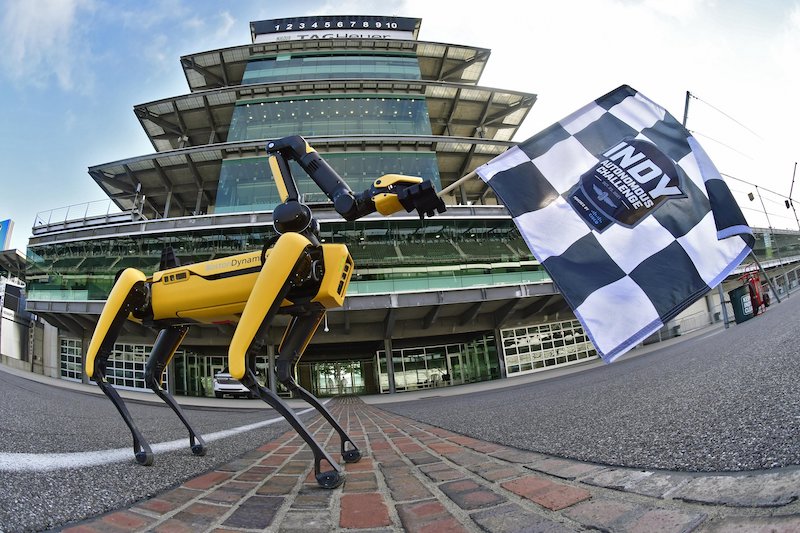
Interview: Energy Systems Network CEO Paul Mitchell talks about the future of cars and Indy Autonomous Challenge
It’s been a while since we wrote up an interview, mainly because they take a long time to transcribe and edit into a readable article. And we’re not yet a large enough website to devote time to doing that because there are many other stories that would have to wait while we’re busy doing that.
However, the subject of electric vehicles and EV charging networks are important technologies that literally millions of people have been reading about on this website, and we think they will find this interview interesting.
The interview is with Paul Mitchell, president and CEO of Energy Systems Network, a US-based nonprofit which could be described as a kind of public-private partnership with the aim of discovering and commercialising technologies that provide a platform for the continued healthy growth of the entire clean-energy future of moving machines – cars and other road-going vehicles in particular, but possibly even marine vessels and other types of craft such as drones and maybe even planes.
It’s a historic opportunity to rebuild the world on more environmentally friendly foundations than was possible using oil and gas, which we are not hating on… we’re just saying.
Anyway, here’s the write-up of the interview, the video of which can be found on our YouTube channel and embedded at the end of the article. (Questions asked by Abdul Montaqim. Interview took place on January 4th, three days before the race – the Indy Autonomous Challenge @ CES.)

Abdul Montaqim: I’m excited to be interviewing you about this pioneering and groundbreaking event – the Indy Autonomous Challenge at CES. But first I’ve got to ask you about where you are – the background I mean – it looks epic.
Paul Mitchell: Sure. So I’m talking to you live from the Las Vegas Motor Speedway. It’s a super speedway in the city of Las Vegas, not far – maybe 20 minutes away – from the Las Vegas Strip, where all the casinos and hotels are.
It (the racecourse) is a mile-and-a-half oval, and it’s got pretty significant banking in the turns, which is actually proven to be helpful to our vehicles to achieve some some higher speeds and go into those turns faster and more safely.
And today and every day this week, we will be practicing here, really starting here in the next few minutes you’ll probably may even see some of the cars start to go around, and and we’ll have practice every day until January 7th, when we will run our competition here at this wonderful facility.
AM: Just one more question about the stadium. Normally what is it used for? And what are your observations about the differences between Formula 1 racing and these oval-track based races?
PM: Yeah, so this so this track is used by Nascar for stock car racing. It has been used in the past for Indycar. They have not been here in a few years, but they did race here for a number of years and they used to hold the the Series Championship Race here at the Las Vegas Motor Speedway for Indycar.
In the United States, ovals are a quite popular form of racing, particularly for Nascar. They run a lot of oval courses and one of the nice things about an oval like this, especially with the wide banking and the wide track, is that it allows Nascars and even Indy cars to sometimes run three or even four wide.
So if you can imagine cars going around – and Nascars are probably a 180 miles an hour, Indy cars are 220 miles an hour – and they are wheel to wheel, right next to each other, and that’s part of why people find these ovals exciting.
We chose to race on ovals first at the Indianapolis Motor Speedway, where we held our our first competition on October 23, and now, here at the Las Vegas Motor Speedway on January 7th.
We chose to to tackle the challenge of ovals really because our objective was – first and foremost – to demonstrate fully autonomous vehicles at high speeds, and ovals are a really good platform for achieving very high speeds.
It allows us to go 150, 160 (miles an hour). Some day, we hope to reach as much as 200 miles an hour without having to to break and turn like you would in a road course that is more familiar to Formula 1.
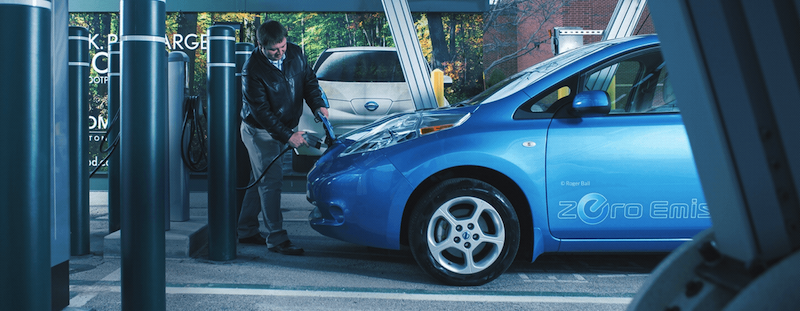
AM: Tell us more about Energy Systems Network, the organisation of which you are the president and CEO, and which has been holding this Indy Autonomous Challenge these past few years. Is it a private organization, or is it sort of a government-backed thing, or is it a consortium of companies? What is it?
PM: So actually it’s a bit of all the above of what you were just saying. So Energy Systems Network is based in Indianapolis, Indiana. It is structured as a United States non-profit corporation, so we do get some funding from the government – both the state of Indiana and the federal government.
We also receive significant funding from industry because we have kind of a consortium of industry partners and board members that will invest in our our projects and then we also get money from philanthropies – so, from foundations that want to support the work we’re doing.
All of our projects are are typically developing and validating new technologies in a commercial environment. So if you have a new electric vehicle platform or charging infrastructure or you’re trying to validate some new business model – such as vehicle-to-grid charging or electric buses or smart grid technology, renewable energy, hydrogen technology and, of course, autonomous vehicles – we will develop projects with industry partners, with government partners, and provide project management and kind of visionary leadership to ensure that those pilot projects are successful, and that everybody involved learns what it is that they hope to learn during those projects.
These projects typically last for two to three years from start to finish. So we we don’t run programs that are long term, we run projects that have a start and a finish. Those that are going to run longer term, we actually spin those out and they become their own companies, their own entities.
So even with this Indy Autonomous Challenge, maybe in the next year, it probably will spin out of Energy Systems Network and become its own entity and we’ll move on to the next endeavour.
AM: I can imagine it spinning out into a very successful venture in the long run. But the critical technology to electric and autonomous cars is the availability of charging networks. Unlike petrol or gas, EV charging points are not widely distributed – there’s not enough of them. Is that something you’re working on?
PM: So most of our projects deal with the electric grid, either on the grid side, where we’re doing things like the generation of renewable energy from solar or from wind.
We’re working a lot in advanced battery technology. We launched something called the Battery Innovation Center (pictured below), which is really the foremost battery testing certification and prototype labs in North America.
That organization now works with 300-400 companies around the world to help them advance battery technology.
Where we kind of got our start in transportation was that intersection between battery technology, which started with electrification – electric vehicles. But now, this has moved to not just electrified vehicles, but connected and fully autonomous vehicles, which are really an outgrowth of our experience working with some of the earliest deployments of electric vehicles.
We actually led the first commercial deployment of an electric vehicle in the United States. It was an electric car called the Think City. It was a very small, kind of funny-looking for the United States – a small city car that was fully electric.
We deployed it with the state of Indiana’s department of natural resources as a security car that could go around state parks. They liked it because it was quiet and it wouldn’t disturb the people that were in the park enjoying the nature. That was back in 2008.
So we’ve been involved in some of the very early pioneering efforts in a variety of industries. And now, here, we are providing that same kind of pioneering leadership in the world of autonomous vehicles, particularly the concept of high-speed automation.
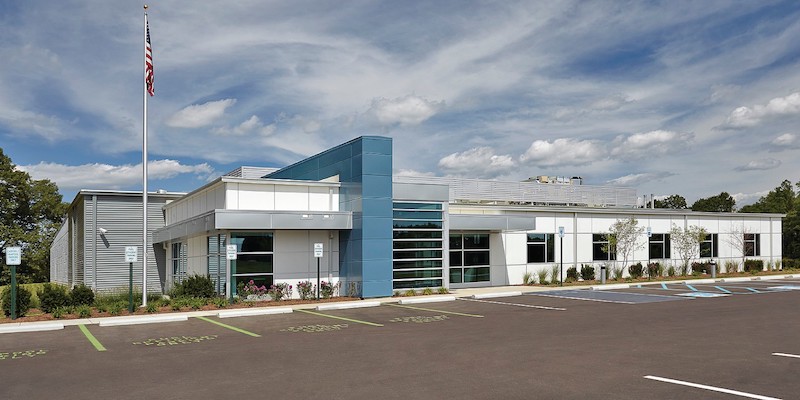
AM: Energy storage – storage of electricity, battery technology, basically whether you’re talking about small batteries inside cars or giant batteries that store electricity for power stations – is a big issue. The electricity that most of us use at home is a live network – little to none of it from stored energy. Why are there no batteries that can store massive amounts of electricity so we don’t have power cuts? And what about the competition between lithium-ion batteries and hydrogen fuel cells? Proponents of hydrogen say it’s better because you can store hydrogen. What’s your opinion and what are your observations about these kind of issues?
PM: Yes, there is a challenge there.
Lithium ion batteries, and batteries in general, certainly can work for the storage of electricity – that’s been proven, it’s being proven every day with electric vehicles, and it’s been used for a long time as backup power for things like cell phone towers and other critical infrastructure.
The challenge is that bulk storage – at the grid level – requires multiple megawatts of storage.
The grid operates on a gigawatt level, not a kilowatt level, so if you’re trying to store hundreds and maybe in some cases thousands of megawatts worth of power, the number of batteries you need is substantial.
The batteries would essentially be stacked and look more like a data center. They would take up large structures that would need to be located next to the grid.
These things are being done in projects throughout the world. Certainly in California there’s been a lot of large-scale storage projects, there’s some large-scale storage projects in other parts of the United States and around the world, particularly in Asia – China, Japan.
However, the engineering and integration of these kinds of systems is still expensive – and it’s not necessarily the best use case for lithium-ion battery technology.
There are some other alternatives that the industry is looking at that allows you to do bulk storage. Historically there’s been things like pumped water stations, there’s thermal storage, mechanical storage that use more physics-based approaches, and then just working on battery chemistries that maybe are are more low-cost and robust in terms of being able to store large amounts of energy.
That’s bulk or centralized storage.
The alternative is distribute storage. Certainly, you have a group of of innovators and entrepreneurs and policy makers who advocate for more distributed storage. So rather than trying to store megawatts of power at the grid level in large structures, we could also have batteries at everybody’s home or everybody’s business.
That way, you would have smaller batteries, distributed across the grid, so that if the outage occurs in your home or maybe in your neighborhood, there would be a smaller battery that would provide backup power just for you or your neighbors until the broader grid system is brought back.
So that concept of distributed energy storage versus bulk storage is a big debate right now in the grid industry.
You asked another question about hydrogen versus battery storage. There’s really pluses and minuses to both of those technologies, in our opinion.
At Energy Systems Network, we’ve done extensive work in the battery space and know a lot about it, and we’re actually getting ready to launch a pretty ambitious hydrogen project because we believe hydrogen also plays a real important role.
My own opinion is that hydrogen probably is a more near-term viable option for over-the-road trucking, which is a big industry in the United States. So if you’re talking about big 18-wheelers or semi-trucks that are traveling and traversing the US on interstate highways, those are very difficult to run on fully electric just because of the weight of the cargo they’re carrying, and the number of miles they need to run before stopping and charging.
So hydrogen seems to be a better alternative for that kind of long-haul trucking if you’re trying to go to a more green transportation fuel, and I think hydrogen also can play a role in providing industrial energy solutions, whether it’s for refineries or for other industrial manufacturing operations.
In that instance, hydrogen is really competing more with natural gas a resource versus electricity.
So I think there’s definitely a role for hydrogen at the same time. It’s not a zero-sum game.
There will continue to be advanced lithium batteries and other battery technology for electric vehicles, particularly for passenger cars, light duty vehicles, and for residential storage systems like we just talked about.
So I think both technologies will live side by side for years to come and there’s plenty of growth for investors and entrepreneurs in both those industries.
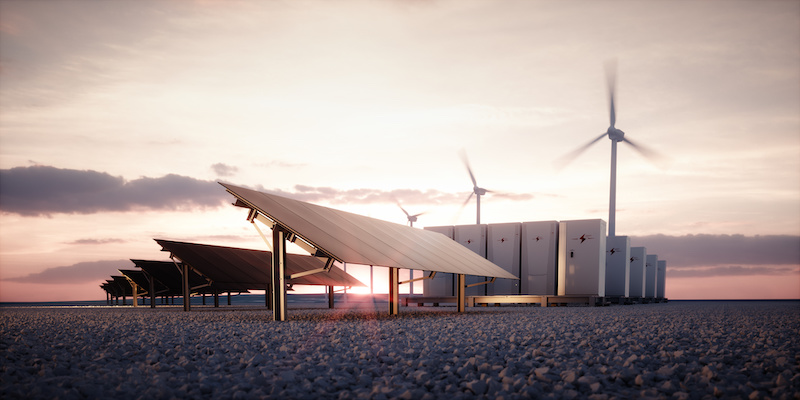
AM: Let’s talk about the Indy Autonomous Challenge. Tell us about your involvement with that.
PM: So, the Indy Autonomous Challenge was started almost three years ago as an idea to bring back the impact that the DARPA Grand Challenge had on the autonomous vehicle industry.
That competition – ran by the US government through the Department of Defense’s Darpa agency in 2004-2005 – really was the birth of the modern autonomous vehicle industry.
You had university-based teams that competed then for a million-dollar prize and teams from Carnegie Mellon, Stanford, Michigan, MIT and others participated.
That led to a lot of technology innovation, a lot of corporate startups spun out of universities that today are very successful companies, like Waymo at Google, and Cruise, which is part of General Motors.
Even some of Uber’s and Tesla’s autonomous technology entrepreneurs really were the alumni of that Darpa challenge.
So we looked at that and thought we could we try to do that again for a modern era and tackle a new challenge – in this case, high-speed automation.
Darpa was really about just validating that autonomous vehicles could work. Since then, you’ve seen a lot of focus of industry on low-speed automation in urban and suburban environments, but not enough focus on the edge case of extreme high speeds.
This is important because if you’re going to run autonomous vehicles eventually on highways, they’re going to need to encounter each other at speeds in excess of 80 maybe even 100 miles an hour and there’s not really been a lot of of testing and validation about whether the components, the hardware, or the software can handle those kinds of operating conditions.
So we set up a grand challenge with a million dollar prize to leading research universities from around the world to compete in a racing format using fully autonomous race cars.
Our organization worked to develop this in partnership with Dallara, a race car manufacturer, and with Clemson University, who helped with some of the design and engineering of the race car.
And we originally partnered with Indianapolis Motor Speedway. We thought it was a great venue to showcase this technology. The Indianapolis Motor Speedway is maybe the most iconic and famous track, certainly in the United States and, one could argue, in the world, and has been home to countless firsts in terms of automotive technology – the first rear view mirror, the first seat belt – all kinds of early innovations.
So for two years, teams competed first virtually doing simulation rounds and then starting in June, 2021, the teams came to Indianapolis and began operating with real race cars.
We had 41 universities that originally signed up to participate. Those universities were kind of whittled down through the competition. Many of them merged together and partnered together with one another and we wound up with nine teams representing 18 universities from eight countries.
Then we ran an event on October 23rd at the Indianapolis Motor Speedway. It was a time trial event – so only one car at a time. It was very successful in terms of showcasing high-speed automation.
We’ve set all kinds of speed records for fastest speed, top speed, fastest lap, fastest two-lap average, and so on. Our speeds were in the 150s – 157, I think was our top speed.
When we completed that competition and gave out the million-dollar prize to the winning team from Germany – the Technical University of Munich – we realized that we still had more to show the world and wanted to take these cars and really demonstrate passing – or overtaking – which was always one of our core objectives.
It wasn’t just about going fast. We needed to show that autonomous vehicles could encounter one another and make decisions the way human drivers make decisions about when to overtake or when to pass.
So we set out to run a second competition – a passing competition – and thought, ‘Where better to do that than as part of CES, the biggest tech innovation show in the United States, arguably in the world’.
So here we are in Las Vegas, during the week of CES, preparing for the Autonomous Challenge @ CES, which will be held January 7th at the Las Vegas Motor Speedway and it will include a passing competition, where two cars will go on the track at the same time and they will pass each other at increasingly higher speeds until one car is unable to overtake.
At that point, we will declare a winner, then move on to the next round and so on and so forth until we’ve got a winner of that that passing competition.
I’m very excited about that format. It’s never been never been done before. There’s been no head-to-head racing of autonomous vehicles in the history of of mankind so it’s be another first for us.
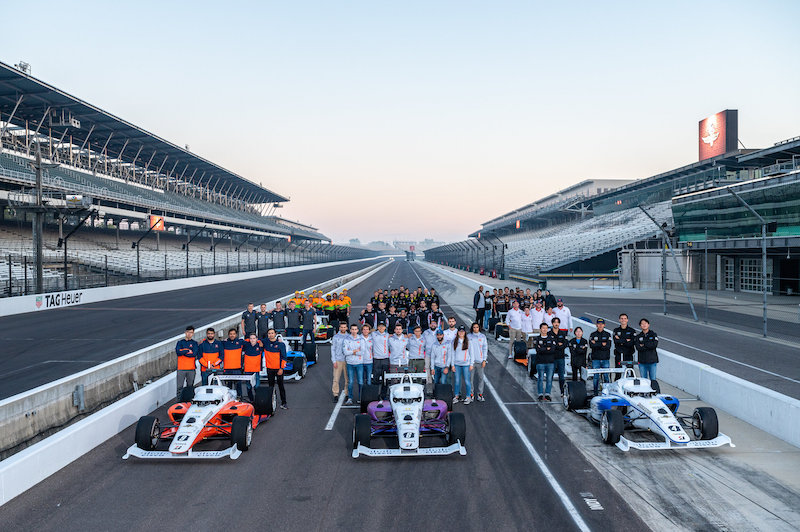
AM: Well it’s an absolutely fantastic idea and achievement. Do you think any of these teams that are competing against each other will spin out as individual businesses or do you think external companies – such as big automakers – will come in and take over through investments and acquisitions? What kind of business models do you see emerging out of this?
PM: I think time will tell. I’m confident that we have tremendous interest from our sponsors, which are really leading component manufacturers as opposed to whole vehicle manufacturers or original equipment manufacturers.
And I really do view this competition as a way for certain component technologies that are critical for autonomous vehicles to be proven out and advanced. So I see that relationship continuing on far into the future.
These are university-based teams. How they spin things out, how they create companies, what the objectives of those companies are, all that is probably going to vary from from university to university.
Some of them may be more focused on applied research relationships with existing industry players, which could be automakers. Others may be interested in licensing their technology. And others may look to create a brand new company.
We’ll be announcing later today that one of the teams – the team that won our event in October, the Technical University of Munich – is spinning out a company called Drive Blocks, which will be bringing autonomous algorithms and software into the marketplace.
So I think time will tell what kind of ventures will emerge out of this.
Just like with the Darpa Grand Challenge, I don’t think anyone could predict exactly how that was going to impact the industry and, looking back, I think everyone feels confident that we certainly would not be where we are today without the the innovations that came out of that Darpa Grand Challenge.
And hopefully 10 years from today people will say the same thing about the Indy Autonomous Challenge.
